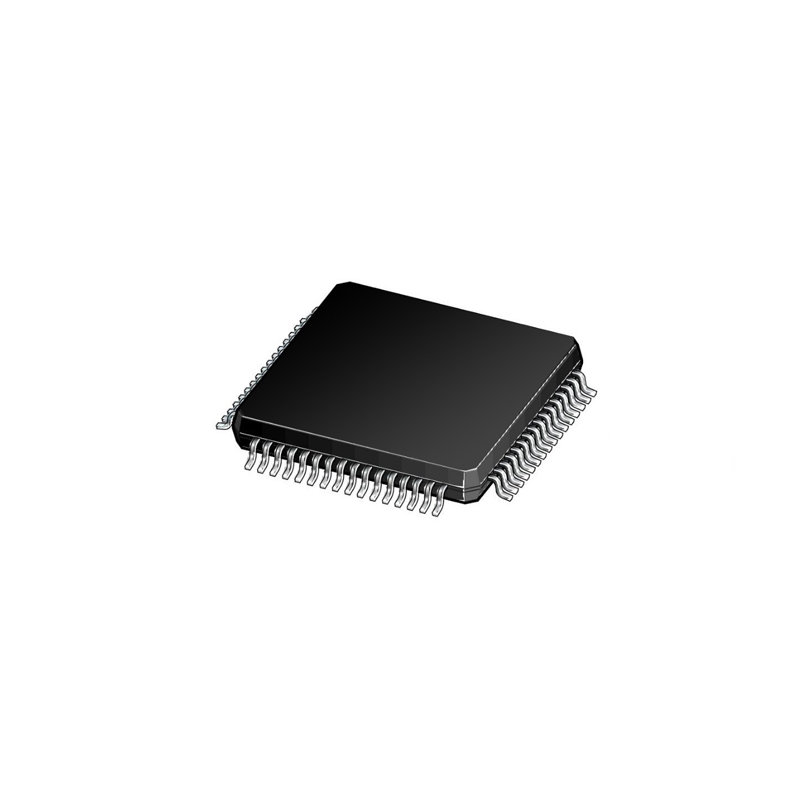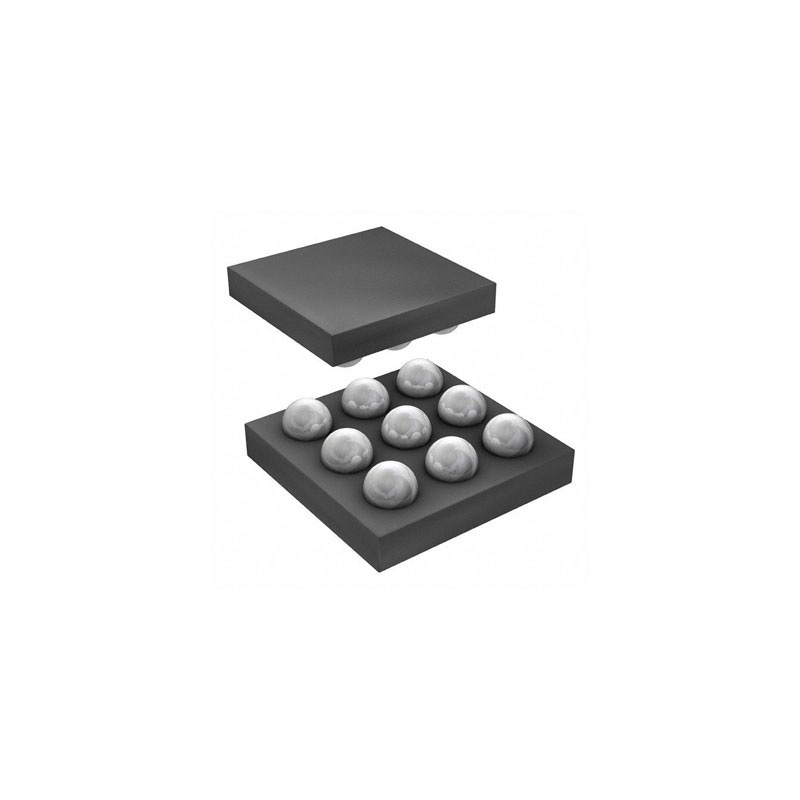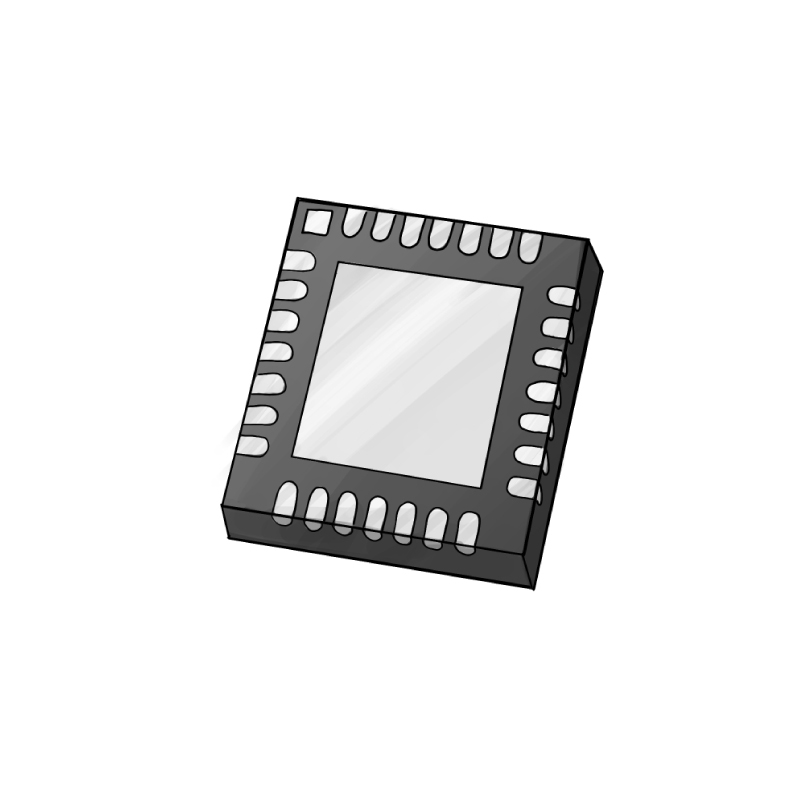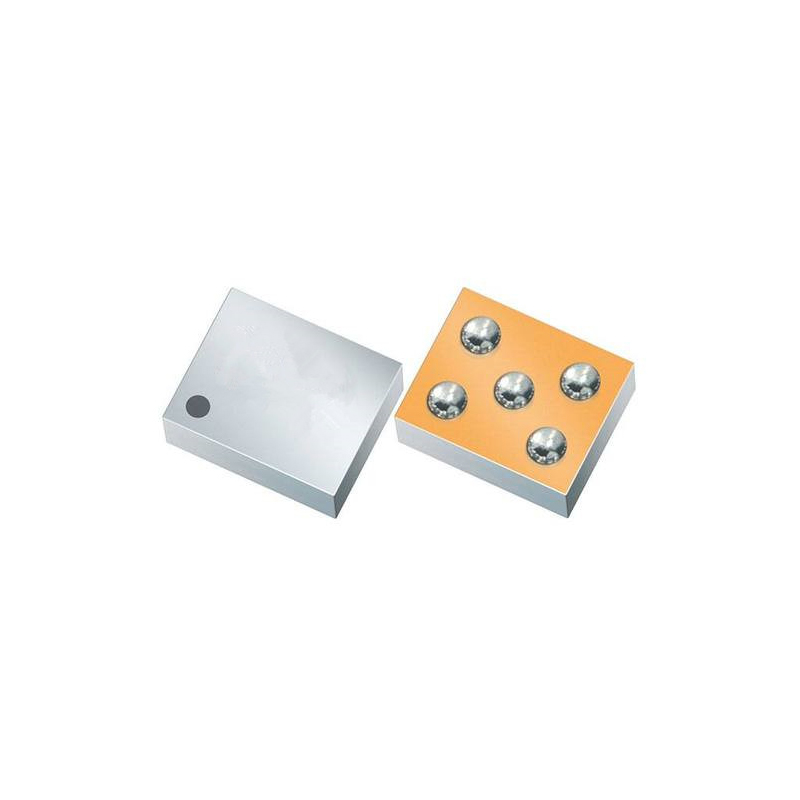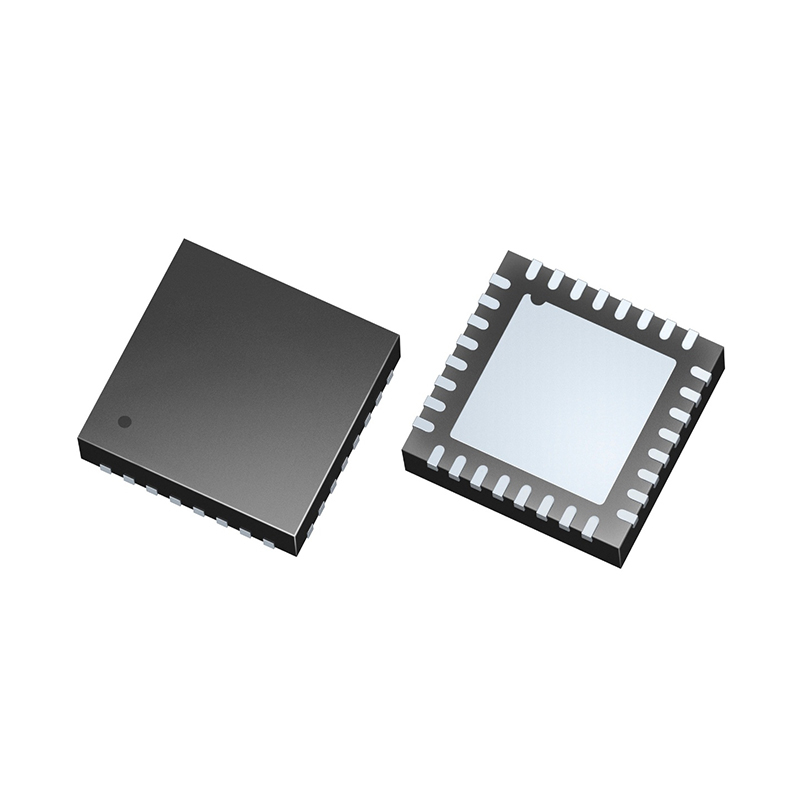How Does the Bytech Wireless Charger Work?
Update Time: Jun 28, 2023 Readership: 4460
Contents

Wireless charging has gained significant popularity in the tech industry as a convenient and cable-free method of powering up electronic devices. It eliminates the need for traditional charging cables and allows for a clutter-free charging experience. One notable device that embraces this technology is the Bytech wireless charger. This innovative charger offers users the ability to charge their devices without the hassle of plugging in cables, making it a convenient and practical solution for powering up various electronics. In this article, we will delve into how the Bytech wireless charger works and explore the underlying technology that enables this seamless wireless charging experience.
Wireless Charging Technology
Wireless charging operates on the fundamental principle of electromagnetic induction or resonance, enabling the transfer of electrical energy from a power source to a device without the need for physical connections. This technology revolutionizes the way we charge our devices by eliminating the reliance on charging cables.
Electromagnetic induction is the primary concept behind wireless charging. It involves two main components: a charging pad or base station and a charging receiver or device. The charging pad generates an alternating current (AC) that produces a changing magnetic field.
When the charging receiver, typically embedded in the device, comes into proximity with the charging pad, it detects the magnetic field. The charging receiver consists of a coil that acts as an antenna for capturing the magnetic field generated by the charging pad.
As the magnetic field fluctuates, an electric current is induced in the receiver coil through the process of electromagnetic induction. This induced current is then converted into usable power to charge the device's battery.
Alternatively, some wireless chargers employ resonance technology. Resonant charging operates by using resonant circuits to transfer energy wirelessly. The charging pad and the device being charged are equipped with resonant coils that are tuned to the same frequency. When these coils come into close proximity, they establish a resonant coupling, allowing efficient power transfer.
By embracing wireless charging technology, the Bytech wireless charger enables users to charge their devices simply by placing them on the charging pad, eliminating the need for tangled cables and providing a seamless charging experience.

Components of the Bytech Wireless Charger
The Bytech wireless charger consists of key components that work together to facilitate wireless charging. These components include the charging pad or base station and the charging receiver or device being charged.
1. Charging Pad/Base Station: The charging pad or base station serves as the primary component of the Bytech wireless charger. It is typically a flat surface where the device to be charged is placed. The charging pad is responsible for generating the electromagnetic field required for wireless charging. It is equipped with a coil or coils that generate the alternating current (AC) necessary for inducing an electric current in the charging receiver.
2. Charging Receiver/Device: The charging receiver is the component embedded within the device that enables wireless charging. It consists of a receiver coil or coils that capture the electromagnetic field generated by the charging pad. The receiver coil acts as an antenna, converting the alternating magnetic field into an electric current. This current is then rectified and used to charge the device's battery.
The charging receiver is typically integrated into the device's circuitry or incorporated into a wireless charging case or module. In the case of smartphones, for example, the charging receiver may be built into the device's back cover or positioned at a specific location to align with the charging pad.
These components, the charging pad/base station and the charging receiver/device, work in tandem to enable the Bytech wireless charger to transfer power wirelessly and charge compatible devices conveniently. The charging pad generates the electromagnetic field, while the charging receiver captures and converts this field into usable electrical energy to charge the device's battery.

Charging Pad/Base Station
The charging pad or base station in the Bytech wireless charger functions as the primary source of power and generates the electromagnetic field necessary for wireless charging. Here's a breakdown of how it operates:
1. Power Source Connection: The charging pad or base station connects to a power source, typically through a power adapter. The power adapter converts the standard alternating current (AC) from a wall outlet into the appropriate voltage and current required by the wireless charger.
2. Power Conversion: Once connected to the power source, the charging pad or base station converts the incoming electrical power to the specific parameters needed for wireless charging. This conversion process ensures that the charger operates within the designated power limits and delivers the right amount of energy for charging.
3. Electromagnetic Field Generation: The charging pad contains one or more coils that serve as the primary components responsible for generating an electromagnetic field. These coils are often made of copper wire wrapped in a specific configuration. When an alternating current flows through these coils, it creates a changing magnetic field around them.
4. Induction or Resonance: Depending on the technology employed by the Bytech wireless charger, the coils in the charging pad utilize either electromagnetic induction or resonance to transfer power wirelessly. In the case of induction-based charging, the alternating magnetic field generated by the charging pad induces a corresponding alternating current in the receiver coil of the charging receiver/device.
5. Magnetic Field Alignment: To ensure effective power transfer, the charging pad and the device being charged should be properly aligned. Some charging pads incorporate alignment indicators or specific design elements to assist users in correctly positioning their devices for optimal charging efficiency.
6. Efficiency and Power Control: The charging pad is designed to maximize the efficiency of power transfer while minimizing energy loss. Advanced charging pads may incorporate control circuitry to monitor and adjust the power output based on factors such as the charging receiver's needs, battery state, or charging protocol compatibility. This helps optimize charging speed and ensures safe operation.
By connecting to a power source, converting electrical power, and generating an electromagnetic field, the charging pad or base station in the Bytech wireless charger provides the essential foundation for wireless charging. It enables the transmission of power wirelessly to compatible devices placed on its surface, allowing for convenient and cable-free charging experiences.

Charging Receiver/Device
The charging receiver or the device being charged interacts with the charging pad in the Bytech wireless charger to capture and utilize the electromagnetic field generated by the charging pad. Here's how this interaction occurs:
1. Receiver Coil: The charging receiver, which is integrated into the device or attached as a separate module/case, contains a receiver coil. This coil is designed to pick up the electromagnetic field generated by the charging pad. The receiver coil acts as an antenna for capturing the changing magnetic field.
2. Magnetic Field Detection: As the charging receiver/device is placed in proximity to the charging pad, the receiver coil detects the magnetic field generated by the charging pad's coils. The changing magnetic field induces an alternating current (AC) in the receiver coil through the process of electromagnetic induction.
3. Electric Current Generation: The alternating current induced in the receiver coil is then passed through a rectifier circuit within the charging receiver. The rectifier circuit converts the alternating current into direct current (DC), which is the suitable form of electrical energy for charging the device's battery.
4. Power Transfer: The rectified direct current is then used to charge the device's battery or power its internal circuitry. The device's charging system manages the incoming power, regulates the charging process, and ensures the battery receives the appropriate voltage and current levels for safe and efficient charging.
5. Alignment and Efficiency: Proper alignment between the charging receiver's coil and the charging pad is crucial for efficient power transfer. Many wireless chargers, including the Bytech wireless charger, incorporate alignment guides or mechanisms to assist users in positioning their devices correctly on the charging pad. This alignment ensures optimal coupling between the charging pad's electromagnetic field and the receiver coil, resulting in efficient power transfer.
By capturing the electromagnetic field through the receiver coil, converting it into usable electrical current, and utilizing that current for charging or powering the device, the charging receiver in the Bytech wireless charger enables seamless and cordless charging experiences.

Inductive or Resonant Charging
Both inductive and resonant charging are widely used in the wireless charging industry. Inductive charging involves the use of two coils—one in the charging pad/base station and one in the device—to create a magnetic field for power transfer. This is the most common form of wireless charging and is found in many wireless chargers available on the market.
On the other hand, resonant charging relies on resonant circuits to facilitate power transfer wirelessly. It involves tuning the resonant frequency of the charging pad and the device being charged to establish resonance and enhance power transfer efficiency.

Energy Transfer and Conversion
The electromagnetic field generated by the charging pad in the Bytech wireless charger induces an electric current in the receiver coil of the device being charged. This current is subsequently converted into usable power to charge the device's battery. Here's a breakdown of the process:
1. Electromagnetic Field Generation: The charging pad contains coils that generate an alternating current (AC), which creates a changing magnetic field around them. This alternating current is typically produced by the power supply connected to the charging pad.
2. Magnetic Field Induction: When the device with the charging receiver comes into proximity with the charging pad, the changing magnetic field generated by the pad's coils interacts with the receiver coil in the device. The receiver coil acts as an antenna for capturing the magnetic field.
3. Electromagnetic Induction: The changing magnetic field induces an alternating current (AC) in the receiver coil of the device. This induction occurs based on the principles of electromagnetic induction, discovered by Michael Faraday. According to Faraday's law, a changing magnetic field induces an electric current in a nearby conductor, in this case, the receiver coil.
4. Current Rectification: The alternating current induced in the receiver coil is then passed through a rectifier circuit present in the charging receiver or the device. The rectifier circuit converts the alternating current into direct current (DC), which is the suitable form of electrical energy for charging the device's battery. Rectification ensures that the current flows in a single direction, enabling effective battery charging.
5. Charging the Device's Battery: The rectified direct current is then supplied to the device's battery or its charging circuitry. The charging system of the device manages the incoming power, regulates the voltage and current levels, and charges the battery accordingly. The energy stored in the battery can be subsequently utilized to power the device's operations.
By generating an electromagnetic field and inducing an electric current in the receiver coil of the device, the Bytech wireless charger facilitates the wireless transfer of power. The conversion of the induced alternating current into rectified direct current ensures that the captured energy can be effectively used to charge the device's battery and keep it powered up.

Compatibility and Limitations
While the compatibility of Bytech wireless chargers with different devices and technologies depends on the specific model and its supported standards, the following are general insights into the compatibility and potential limitations of wireless chargers:
1. Qi Compatibility: Many wireless chargers, including those produced by Bytech, are designed to be compatible with the Qi wireless charging standard. Qi is a widely adopted standard in the industry, ensuring compatibility with various devices such as smartphones, smartwatches, and other Qi-enabled electronics. Qi-compatible devices can be charged on any Qi-certified wireless charger, offering flexibility and convenience.
2. Device Requirements: Wireless charging requires the device being charged to have a built-in wireless charging receiver or an external accessory that enables wireless charging. If a device does not have wireless charging capabilities, it may not be compatible with the Bytech wireless charger or any other wireless chargers. It's essential to check the device's specifications to determine its compatibility with wireless charging technology.
3. Charging Speed: The charging speed of a wireless charger can vary depending on several factors. This includes the output power of the charger, device compatibility, and the charging protocols supported. It's important to note that wireless charging is typically slower than traditional wired charging methods. However, advancements in technology have led to faster wireless charging capabilities, especially with higher wattage chargers and devices that support fast wireless charging.
4. Distance and Alignment: Wireless charging requires close proximity and proper alignment between the charging pad and the device being charged. While some wireless chargers offer a small degree of flexibility in terms of distance and alignment, it's generally recommended to place the device directly on the charging pad for optimal charging efficiency. Charging may be less effective or may not work at all if the device is not properly aligned or placed at a significant distance from the charging pad.
5. Foreign Objects and Case Compatibility: Wireless chargers can be sensitive to foreign objects placed between the charging pad and the device. Metal objects, credit cards, or certain types of cases can interfere with the charging process. It's important to ensure that the device and the charging pad are free from any obstructions to ensure proper charging.

Conclusion
In conclusion, the Bytech wireless charger offers a convenient and cable-free solution for wireless charging. By utilizing either inductive or resonant charging technology, the charger enables the transfer of power from the charging pad to the device being charged without the need for physical connections.
The key components of the Bytech wireless charger include the charging pad/base station and the charging receiver/device. The charging pad generates an electromagnetic field, which induces an electric current in the receiver coil of the device. This current is then converted into usable power to charge the device's battery.
The Bytech wireless charger provides a seamless and clutter-free charging experience. Its wireless capabilities, when compatible with devices, allow for easy and efficient charging, contributing to a more convenient and hassle-free charging routine.
Previous:Does Wireless Charging Cause Damage?
Extended Reading
 FAQ
FAQ
-
Is it possible to use the Bytech wireless charger to charge multiple devices simultaneously?
The ability to charge multiple devices simultaneously depends on the specific model of the Bytech wireless charger. Some wireless chargers have multiple charging coils or designated areas that allow for charging multiple devices at once. However, it is important to check the product specifications or consult the manufacturer to determine the charging capabilities of a particular model.
-
Can I use the Bytech wireless charger with my phone even if it has a protective case?
Yes, in most cases, you can use the Bytech wireless charger with a protective case. However, it is important to ensure that the case is not too thick or made of materials that interfere with wireless charging. Generally, thin and non-metallic cases are compatible with wireless charging.
Popular Blogs
-
![How Does the Bytech Wireless Charger Work?]()
How Does the Bytech ...
Wireless charging has gained significant popular...
-
![The Difference Between Wireless Charging and Wireless Power]()
The Difference Betwe...
With the gradual rise of wireless charging techn...
-
![Does Wireless Charging Harm the Battery?]()
Does Wireless Chargi...
Wireless charging technology originates from wir...
-
![What is Wireless Charging, and How is it Implemented?]()
What is Wireless Cha...
As the name suggests, wireless charging allows d...








